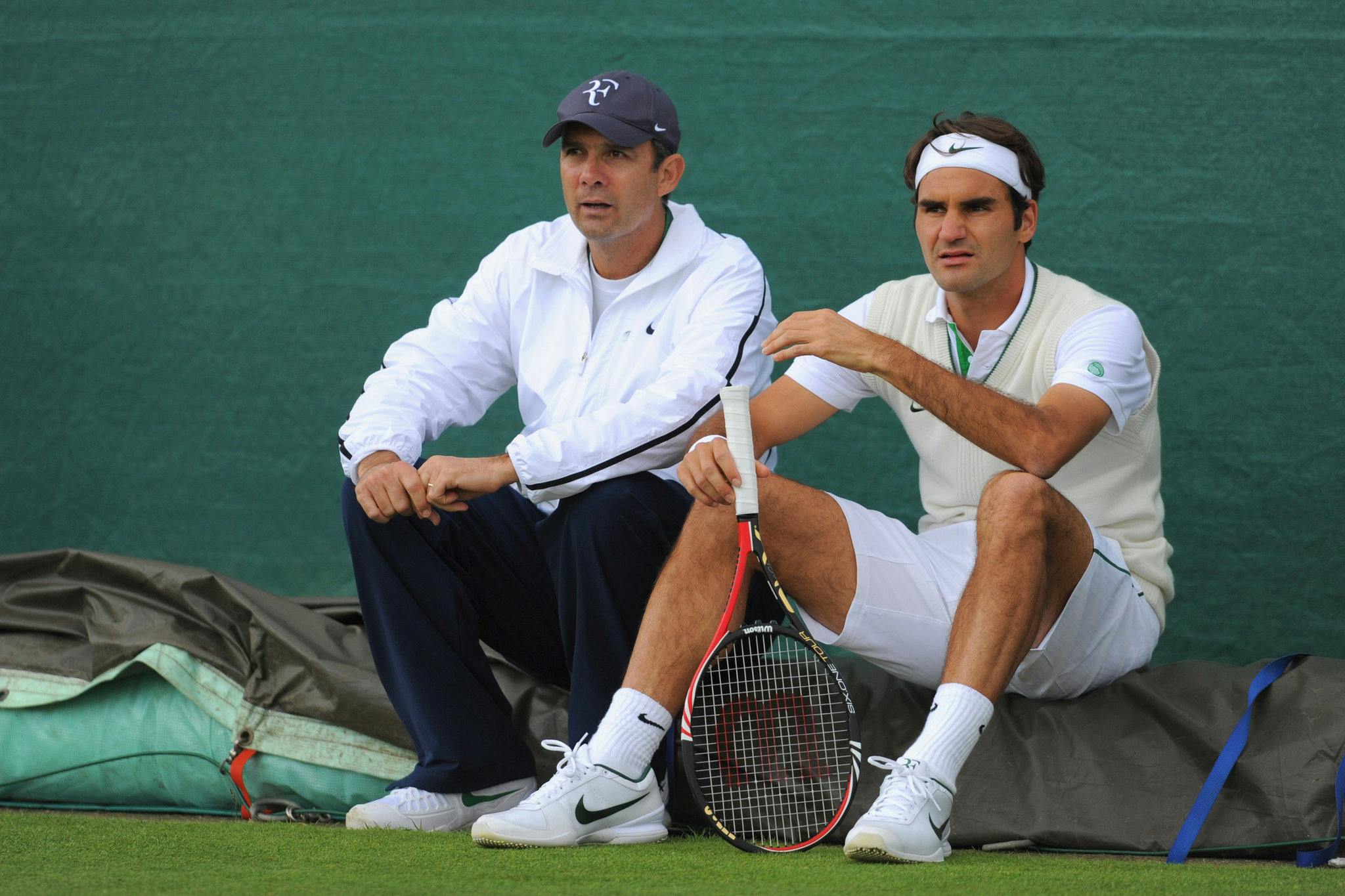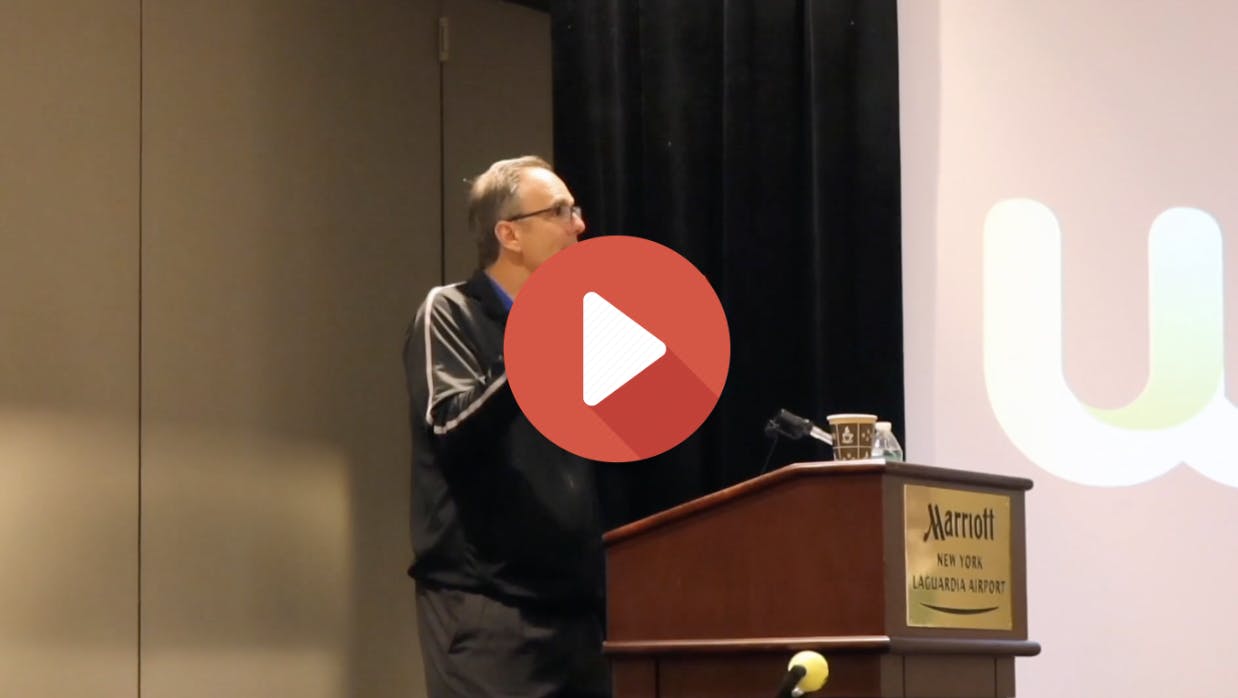Featured courses
- Four Tips to Turn Your Tennis Forehand Into a Weapon by Grant Young
- Tennis Legend Billie Jean King’s 4 Responsibilities as a Player by Grant Young
- Two Top Priorities For Success in Doubles Tennis by Grant Young
- Three of Tennis Whiz Lisa Dodson’s Tips to Improve Serves by Grant Young
- Three Elite Tennis Ball Machine Drills by Grant Young
- Three Keys For Correcting Tennis Serving Mechanics by Grant Young
- Five Tactical Tips to Win More Tennis Matches by Grant Young
- 4 Lessons Patrick Mouratoglou Learned From Coaching Serena Williams by Grant Young
- Four Effective Backhand Tennis Drills by Grant Young
- Two of Legendary Tennis Coach Paul Annacone’s Crucial Player Development Tips by Grant Young
- A Step-By-Step Guide To Mastering The Serve by Krsto Arsenijevic
- How to Dominate the Clay Court in Tennis by Krsto Arsenijevic
- 10 Essential Tennis Drills Every Coach Should Know by Brandon Ogle
- 8 Pre-Game Exercises to Prime Your Tennis Team for Competition by Neil Brown
- 7 Proven Tips To Develop Your Net Game in Tennis by Krsto Arsenijevic
- 10 Essential Tennis Drills Every Coach Should Know by Krsto Arsenijevic
- Developing Players - Two-handed backhand by Ramon Osa
- 6 Simple Warm-up Exercises For Tennis Players by Krsto Arsenijevic
- How to Beat a Serve-and-Volley Player by Krsto Arsenijevic
- How To Build Your Kinetic Chain Like Djokovic by Aiden Lefebvre
- How to neutralize a lefty in Tennis by Aiden Lefebvre
- 5 Tips To Improve Your Tennis Game Today by Krsto Arsenijevic
- Everything You Need to Know Before Buying New Tennis Shoes by Brandon Ogle
- Amp up your tennis practice with situational play by Neil Brown
- Tennis Equipment List by Brandon Ogle
- How to Master The One-handed Backhand in Tennis by Krsto Arsenijevic
- Modern High School Tennis Coaching Obstacles by Neil Brown
- Increase Your Tennis Fitness Level With 3 Easy Drills by Krsto Arsenijevic
- How to Successfully Hit a Two-Handed Backhand by Brandon Ogle
- How to Become a Grass Court Specialist in Tennis by Brandon Ogle
- How to Dominate the Hard-Court like Serena Williams by Brandon Ogle
- Hit a Drop Shot to Keep Your Opponent Off-Balance by Brandon Ogle
- New Tennis Injury Findings Linked to Neutral & Closed Stances by Oscar Wegner
- CHATTING WITH TENNIS PRO BRUCE CONNORS by Brandon
- How to Become a Mentally Strong Tennis Player by Brandon Ogle
- How to Win the Game of Angles by Hitting Cross-Court Shots by Eric Mahnke

Two of Legendary Tennis Coach Paul Annacone’s Crucial Player Development Tips
- By Grant Young
In today's digital age, finding trustworthy online tennis coaching courses and instruction can be quite a challenge.
The internet is flooded with a vast amount of resources, tutorials, and coaching advice, which can be overwhelming for both beginners and seasoned players looking to improve their game. With countless videos, articles, and social media posts from various coaches, it's often difficult to discern credible information from less reliable sources.
One major issue is the diversity of teaching styles and philosophies. What works for one player might not work for another, leading to confusion about which technique to adopt. Not to mention how many online instructors may lack relevant qualifications or experience, making it hard to gauge their expertise. This can result in players following flawed advice that could hinder their progress instead of enhancing it.
Ultimately, while the wealth of information online can be a resource, it requires careful discernment to find truly valuable tennis guidance. This is why when players and coaches find clinics from world-renowned coaches, they should hold them in high esteem.
And who’s more world-renowned than Paul Annacone?
Paul Annacone has coached 2 of the greatest players of all time (Roger Federer and Pete Sampras), and he has also worked extensively with Taylor Fritz and Sloane Stephens. This came after Paul reached #12 in the world as a player.
He is widely recognized as one of the brightest minds in the game of tennis and has become a celebrity of sorts as a TV personality on The Tennis Channel. Some consider Coach Annacone to be the greatest tennis coach of all time.
Part of what makes Annacone so effective is his deep understanding of the game, and his ability to articulate complex ideas in an incredibly simple way, which is why it's no wonder his players seem to maximize their potential.
And these skill sets also translate when Coach Annacone conducts online clinics. This is why his ‘Paul Annacone - The Key Aspects to Development’ clinic is highly-regarded within the coaching world and should be a first stop for any coach looking to better develop their tennis players. We’ve pulled two of his insights below so you can get a glimpse at Coach Annacone’s excellent insights.
Attributes in Tennis and Being Good on Your Bad Days
Coach Annacone asserts that for a tennis player, the questions about their mental state (what he calls the “head part”) can be limited to: How well do you think under pressure? How well can you problem-solve? How well can you figure things out, no matter what’s going on on the court?
“The heart part is about the ability to be an unconditional competitor,” Coach Annacone added. He then listed how the last part of the equation in being successful in tennis is the physical attributes, which are all things tennis coaches know contribute to physical success on the court.
Coach Annacone then relayed a story about how when he started coaching Pete Sampras, he was struggling to win practice sets while on tour. Yet, despite the outcomes, Sampras always exuded a composure and pragmatism that was hard for Coach Annacone to understand.
When Coach Annacone asked Sampras about this one night, he responded, “The reason that I’m able to be successful is not because of a great serve, or I’m unbelievably talented. It’s because I know how to manage the other parts of my game.”
“When things are good, and I’m playing well, I know I’m going to beat everybody,” Sampras continued. “That’s not my best attribute. My best attribute is if I keep my head in it, I keep my heart going, and regardless of my physical talent on the day, I’m probably going to beat 85% of the people on tour. And that’s when I’ll get to the semis or finals, and that’s when I’ll play well.”
This ended up being the staple of how Coach Annacone built his coaching philosophy. He focuses not on how good a player is on their good days, but how they are on their average and bad days.
Learning to be Malleable in Your Coaching

Coach Annacone discusses how in many player/coach relationships in the world of team sports, most of the athletes conform to their head coaches’ philosophy.
But in an individual sport like tennis, coaches have to be a bit more malleable. For example, Coach Annacone noted how Pete Sampras wanted his messages delivered much differently than Roger Federer.
Therefore, it’s the coach’s job to figure out how to get each athlete to buy in to what he’s teaching, because that is going to take something different from each athlete depending on various factors like their personality, playing style, and upbringing.
“Because if you don’t have buy-in, the players aren’t going to maximize their potential,” Coach Annacone says.
However, he also added that coaches can be more dictatorial in the early stages of a tennis player’s development. But as they become teenagers and have proven promise, the more one’s coaching philosophy should become, “a collaboration and a conversation.”
Coach Annacone later adds, “A good coach in tennis is not someone that knows a lot of tennis. A good coach in tennis is someone that can deliver their message to many different kinds of personalities.”
In understanding the sort of player a coach has, Coach Annacone employs what he calls the Mechanic vs. the Magician linear scale. The magician is someone who does things by feeling and instinct, whereas a mechanic relies more on fundamentals and is more by the book. Understanding where your players lie on this scale is crucial for maximizing a player’s potential.



